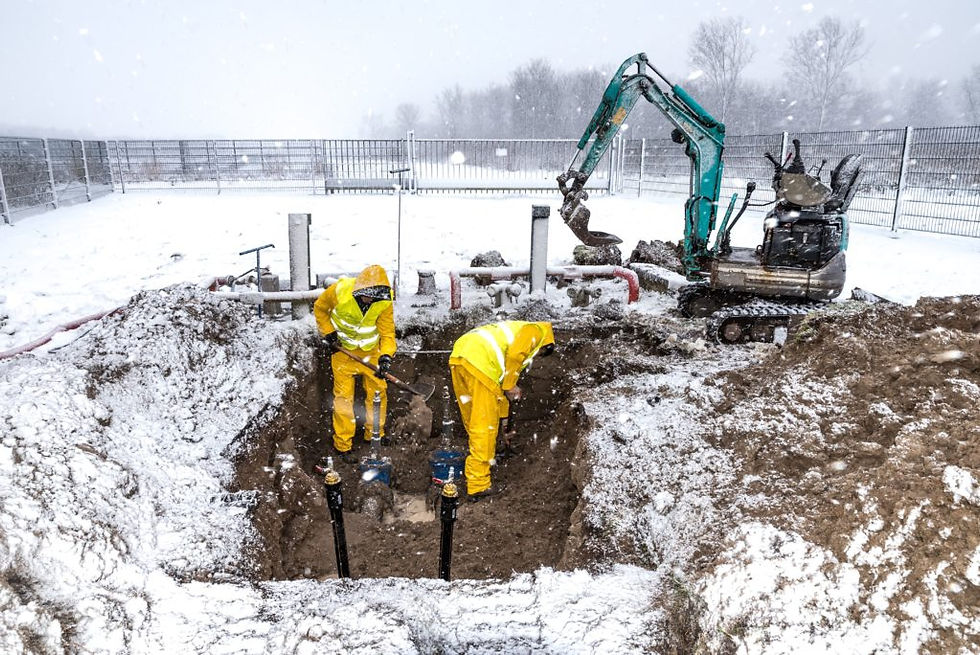Construction Sites Shouldn’t Be Battlefields: Combating Gender-Based Violence at Work
- Brandon Stewart
- Dec 6, 2024
- 2 min read
On December 6, Canada observes the National Day of Remembrance and Action on Violence Against Women, commemorating the 14 women whose lives were tragically taken at Polytechnique Montréal in 1989. This day not only honors the memory of those lost but also serves as a call to action to address gender-based violence (GBV) in all its forms, including in the workplace.
Understanding Gender-Based Violence in the Workplace
Gender-based violence and harassment (GBVH) in the workplace take many forms—verbal, physical, emotional, and sexual—and disproportionately affect women, girls, and 2SLGBTQI+ individuals. Research and consultations highlight alarming trends:
High Prevalence: Nearly 60% of workplace harassment incidents in Canada involve non-sexual harassment, while 30% are sexual.
Fear of Retaliation: Many victims choose not to report incidents due to fear of retaliation, harm to their careers, or doubts that their concerns will be addressed.
Economic and Social Pressures: Women in precarious roles, including construction, often feel compelled to tolerate unsafe conditions to maintain employment.
Gender-Based Violence in Male-Dominated Industries
The construction sector exemplifies the challenges women face in workplaces with skewed gender dynamics. Key risks and realities include:
Hostile Work Environments: Many women report harassment, belittling remarks, or exclusion from professional opportunities.
Lack of Resources: From improper fitting of personal protective equipment (PPE) to inadequate sanitary facilities, women often face safety and health risks unique to their roles.
Underrepresentation: Women represent only 2.6% of workers in construction and extraction occupations, amplifying feelings of isolation.
Global case studies reveal similarly dire circumstances. For example, 74% of female construction workers in India report workplace harassment, often exacerbated by stereotypes and socio-economic vulnerabilities. In Addis Ababa, Ethiopia, nearly 71% of female construction workers report experiencing some form of violence
Why Addressing Workplace GBV Matters
The costs of gender-based violence extend beyond the individual to workplaces and society as a whole. Violence and harassment harm physical and emotional well-being, disrupt productivity, and erode trust within organizations. Conversely, fostering safe workplaces can:
Improve worker retention and satisfaction.
Broaden recruitment pools by attracting a more diverse workforce.
Protect companies from reputational and financial risks.
What Employers and Organizations Can Do
The National Day of Remembrance and Action on Violence Against Women is a reminder for organizations to take concrete steps to address GBV:
Raise Awareness: Implement training programs for all employees, with a focus on fostering safe and inclusive work environments.
Create Clear Policies: Establish and enforce zero-tolerance policies for harassment and violence, ensuring employees know how to report concerns safely.
Enhance Workplace Safety: Provide properly fitting PPE, adequate facilities, and safe reporting mechanisms tailored to meet the needs of all employees.
Support Survivors: Offer confidential support services, such as counseling, and protect victims from retaliation.
Taking Action Together
At Cortech, we are committed to addressing gender-based violence in the workplace, particularly in industries like construction, where women often face unique challenges. We believe in fostering environments where everyone feels safe, valued, and empowered to succeed.
This December 6, let us remember those lost to violence and reflect on how we can take meaningful action to create workplaces free from discrimination, harassment, and violence. Change begins with each of us—let’s work together to build a future where everyone thrives.






Comments